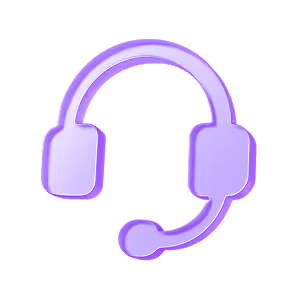B2B sales prospecting often slows growth due to manual tasks and low efficiency. Teams spend hours compiling lead lists, struggle to personalize outreach, and juggle disconnected tools that undercut productivity. Outbound messages get ignored or blocked, and sellers waste time updating CRMs instead of building relationships. These pain points drain pipeline momentum.
Upgrading Prospecting With Modern Tools and Automation
Advancements in AI and automation now enable faster, more targeted prospecting. Platforms like Overloop and solutions such as LinkedIn Sales Navigator remove manual steps, personalize communication, and centralize campaign management. Instead of scattered efforts, teams can automate lead sourcing, streamline outreach, and use real-time data to optimize results.
| Strategy/Tool | Key Features | Pain Point Addressed |
|---|---|---|
| Overloop | AI lead sourcing, automated personalization, multi-channel outreach, CRM integration | Manual lead research, low personalization, tool switching, data entry |
| LinkedIn Sales Navigator | Advanced prospect filters, decision-maker targeting, saved lead lists | Time-consuming search, finding relevant contacts |
| Mailshake | Automated outreach, mail merge, analytics | Manual email sending, measuring campaign success |
| HubSpot CRM | Automated data capture, workflow management, reporting | Manual CRM updates, lack of visibility |
Below, discover proven tips—backed by automation and AI—for energizing your pipeline and simplifying prospecting. For more inspiration, explore our success stories on how teams accelerate their sales workflows.
1. Automate Lead Sourcing With Overloop

Manual lead sourcing can overwhelm B2B sales teams and restrict growth. Traditional methods—scouring LinkedIn, building lists in spreadsheets, entering data by hand—drain time and make it tough to scale. Automated lead sourcing resolves these obstacles by continuously finding and qualifying potential prospects based on custom parameters.
How Overloop’s AI Simplifies Lead Sourcing
Overloop’s AI-powered engine searches a database of over 450 million verified business contacts to match your ideal customer profile. Instead of hunting for leads one at a time, sales teams specify criteria such as company size, title, industry, or location. Overloop instantly delivers a curated list of prospects, each with up-to-date details and verified contact information.
- Eliminates manual list building: Input your targeting criteria and let the platform generate relevant leads automatically.
- Enriches data: Overloop appends decision-maker emails, LinkedIn profiles, company firmographics, and engagement signals, so outreach starts with complete insight.
- Updates continuously: Leads stay fresh—no more outdated or duplicate contacts clogging your lists.
- Reduces repetitive tasks: One-click syncing integrates prospects directly into automated outbound campaigns, bypassing copy-paste workflows.
This automation not only accelerates your pipeline but also raises the quality of each lead. Teams can focus on connecting with prospects who fit their goals instead of shuffling spreadsheets. For comparison, ZoomInfo and Lusha also offer enriched B2B contact data, but Overloop stands out by combining AI-driven sourcing with direct enrollment into multi-channel outreach—all from one platform.
2. Personalize Outreach With AI-Powered Email Writing
Email outreach loses its impact if messages sound generic or automated. Today’s prospects expect communication that feels authentic and tailored to their specific needs. AI-powered personalization tools address this challenge by analyzing lead data and crafting emails that reflect real interest and relevance.
How AI Personalization Boosts Response Rates
AI-driven tools, such as Overloop, use prospect profile data—like industry, job title, or recent public activity—to customize subject lines and email content automatically. This goes beyond simple mail merges:
- Content adapts to recipient roles (e.g., a CTO vs. a Marketing Director receives distinct benefits).
- AI references company news, product launches, or tech stack for added context.
- Each email reads as if written just for that individual, increasing open and reply rates.
For example, Overloop can generate personalized icebreakers based on a lead’s recent LinkedIn post or press release. By referencing a detail unique to the recipient, reps show they’ve done their homework—without spending hours on manual research or custom drafting. Discover more ways to leverage these AI-powered features in our detailed overview of Overloop's features.
Practical Impact for B2B Teams
- Sales teams see reply rates increase as much as 2-3x when shifting from static templates to AI-personalized emails.
- AI surfaces talking points from sources including LinkedIn or company websites, keeping outreach fresh and relevant.
- Automation helps send hundreds of tailored messages daily, scaling personalization without extra effort.
Personalized messaging—delivered at speed and scale—results in stronger engagement, more positive responses, and a healthier sales pipeline.
3. Utilize LinkedIn for Hyper-Targeted Prospecting
LinkedIn remains an essential platform for B2B prospecting, but working manually leads to missed connections and slow results. The rise of advanced tools and smarter workflows helps sales teams reach the right people faster—often within a single session.
Best Practices for Targeted Prospecting on LinkedIn
To reach decision-makers efficiently, use LinkedIn Sales Navigator to filter targets by role, company size, geography, or recent activity. This focused approach creates lists that align with your ideal customer profile, cutting time spent surfing generic feeds. Sales Navigator also enables sales teams to:
- Build custom lead lists: Save searches based on detailed filters and set alerts for job changes or company news, so outreach is always relevant.
- Identify buying signals: Monitor profile engagement or new posts from leads, allowing timely outreach when prospects show interest or change positions.
Many teams struggle to scale manual actions on LinkedIn, such as sending connection requests or following up. LinkedIn automation solutions help by organizing multi-step outreach, setting up reminders, and tracking engagement. Overloop integrates LinkedIn workflows, enabling easy enrollment of filtered leads from Sales Navigator into automated outbound sequences. This makes personalized, timely engagement possible at scale and saves sales reps hours each week.
Combining targeting and automation improves:
- Lead quality—every connection fits your criteria
- Reply rates—outreach is directly aligned with the prospect’s needs
- Efficiency—multiple touchpoints managed from one dashboard
Linking Sales Navigator with automation simplifies prospecting, elevates outbound results, and ensures teams focus on outreach that matters most, not on routine tasks.
4. Implement Multi-Channel Campaigns for Higher Engagement
Multi-Channel Outreach Redefines Pipeline Acceleration
Sending emails alone is rarely enough to capture busy decision-makers. Modern buyers shift between inboxes, LinkedIn, and phone, so connecting across multiple channels is crucial. Teams that blend email, LinkedIn steps, and calls in a coordinated sequence see higher response rates, more meetings booked, and warmer leads entering the sales pipeline.
A multi-channel strategy works because each interaction reinforces your message and increases the chance your outreach gets noticed. For example, a prospect who ignores your email may engage with a LinkedIn invite, or respond to a follow-up voice mail. The key is staying present on all channels without overwhelming prospects or losing track of activities.
Simplifying Multi-Channel Campaigns With Overloop
While managing campaigns across platforms can become complex, sales tools now automate and centralize these workflows. Overloop enables users to design step-by-step outreach sequences that combine personalized emails, LinkedIn actions (connect requests, messages, profile views), and phone calls—all from a single platform. This removes the need to switch between tools and ensures every prospect follows a consistent journey.
- Set the timing, order, and type of each touchpoint for every outreach sequence.
- Let the platform automatically trigger actions and log engagement, keeping records up to date.
- Track performance at each channel and touchpoint to quickly identify what works best for your target audience.
Other tools like Outreach and Apollo.io also support multi-channel workflows, but Overloop eliminates manual steps by directly linking AI-sourced leads with personalized, automated, multi-channel campaigns. For a real-world look at multi-channel success, check out how Marker.io turns cold emails into trial signups using Overloop. Teams can focus on building relationships while their pipeline grows efficiently with minimal hands-on management.
5. Score and Prioritize Leads With AI
Not all leads have the same potential to impact your pipeline. AI-powered lead scoring helps B2B sales teams focus on prospects who are most likely to convert, saving time and increasing overall sales effectiveness. By analyzing data points such as engagement history, firmographics, buyer intent signals, and interaction with previous outreach, these systems assign each lead a dynamic score.
How AI Lead Scoring Drives Pipeline Results
AI analyzes thousands of variables faster than a human, including:
- Email open and reply rates
- Website visits and content downloads
- Company size, industry, and location
- Recent buying signals or tech adoption
This process puts the highest value prospects at the top of your team’s priority list. AI models continuously learn from outcomes, so scoring accuracy improves over time as deals close or opportunities stall.
Top Solutions Used by Leading B2B Teams
- Overloop: Scores and segments leads based on engagement and fit, then routes them to the right outreach workflow automatically.
- HubSpot Sales Hub: Uses predictive lead scoring and workflow automation integrated into CRM tools.
- Salesforce Sales Cloud: Offers Einstein lead scoring, which learns from your sales data to highlight top opportunities.
Adopting AI scoring ensures that reps spend energy on prospects who matter most. The result is a shorter sales cycle, higher conversion rates, and a healthier sales pipeline, all with less manual guesswork.
6. Analyze and Optimize With Real-Time Insights
Measure What Matters: Using Analytics To Refine Prospecting
Successful sales prospecting relies on knowing which strategies produce results. Teams that use analytics platforms gain clarity on what’s working, what’s not, and where to double down. Real-time insights help adjust outreach methods and messaging based on clear data, preventing wasted effort on ineffective campaigns. Without this feedback loop, it’s easy to repeat the same mistakes or overlook emerging opportunities.
Analytics platforms like Overloop centralize key metrics so teams can see opens, reply rates, bounces, and engagement across all outreach channels at a glance. Instead of piecing together reports from different tools, dashboards present a live view of your campaigns in one place. This saves time and draws attention to problem areas immediately, letting sales teams act fast to adapt their approach. Want to learn more about leveraging analytics for sales? Visit our blog.
- Identify best-performing channels: Instantly see if email, LinkedIn, or calls produce higher response rates.
- Spot bottlenecks: Notice if prospects get stuck at a certain step or fail to reply after a specific email.
- Refine targeting: Discover which audiences or messaging themes lead to positive outcomes.
- Test and iterate: Apply A/B testing for subject lines or templates, using results to improve every sequence.
Modern platforms also give managers and reps the information needed to track activity against goals and quotas. Overloop, for example, highlights individual and team performance, showing where efforts turn into real opportunities. Other solutions such as Outreach and HubSpot Sales Analytics offer similar campaign dashboards, but integrating analytics with lead sourcing and outreach in a single platform accelerates the feedback and optimization cycle. Using data as a guide, B2B teams refine tactics quickly—keeping the prospecting pipeline full and focused on what drives growth.
7. Reduce Manual Data Entry With CRM Integrations
How CRM Integrations Remove Data Bottlenecks
Manual data entry creates friction for B2B sales teams. Updating lead records by hand, copying notes between tools, and logging each activity takes valuable time away from actual selling. Integrations between sales platforms and major CRMs have reduced this burden by automating data capture, syncing touchpoints, and triggering workflows behind the scenes.
Top CRMs such as HubSpot and Salesforce now connect directly with prospecting and outreach platforms, letting sales reps:
- Automatically create or update contacts and accounts from new leads
- Sync emails, calls, and messages so all activities are visible in the CRM timeline
- Trigger workflows or next steps as soon as a prospect responds or books a meeting
- Eliminate repetitive double-entry and reduce the risk of errors
Overloop, for example, integrates with both Salesforce and HubSpot, pushing enriched lead profiles and activity data in real time. This means sales teams always work from updated records, never from stale spreadsheets or partial details. Automated syncing not only reduces manual work, but also improves pipeline tracking and forecasting accuracy. Looking for a quick overview? Watch our 5-min demo video to see these features in action.
Integrations with platforms like Pipedrive or Slack further streamline handoffs between sales, marketing, and customer success. When data flows freely, teams stay aligned, response times drop, and sales cycles shorten. These integrations let reps focus on high-value conversations—not on chasing down or entering information.
Conclusion: Transform Your B2B Prospecting for Scalable Growth
Accelerate Pipeline Growth With Modern Prospecting
Embracing AI-driven automation and multi-channel outreach gives B2B teams a proven path to a stronger sales pipeline. Manual prospecting tasks—once a source of inefficiency and bottlenecks—are now handled automatically by platforms designed for scale. Instead of spending hours sourcing leads, writing repetitive emails, or managing disconnected tools, teams shift focus to high-impact selling activities.
Efficient prospecting combines:
- Automated lead sourcing—delivering complete, relevant contacts with up-to-date data
- AI-powered personalization—crafting tailored emails at scale based on real engagement triggers
- Multi-channel campaigns—coordinating LinkedIn, email, and calls for consistent coverage
- Real-time analytics—measuring what works, testing new tactics, and doubling down on top-performing actions
- CRM integrations—ensuring every lead and action syncs seamlessly without manual entry
Tools like Overloop unify these capabilities, eliminating friction and allowing teams to:
- Build dynamic prospect lists aligned with their ideal customers
- Reach decision-makers with personalized, timely outreach
- Track and optimize every campaign step through live dashboards
- Prioritize leads most likely to convert
- Free up capacity to focus on conversations and closing deals
For B2B organizations, the result is faster pipeline growth, higher conversion rates, and less manual effort per success. Adopting these strategies helps teams keep pace with modern buyer expectations, cut down on busywork, and consistently fill the sales pipeline with quality opportunities. The shift to automation and AI doesn't just remove pain points—it unlocks capacity for sales teams to achieve more with less friction.



